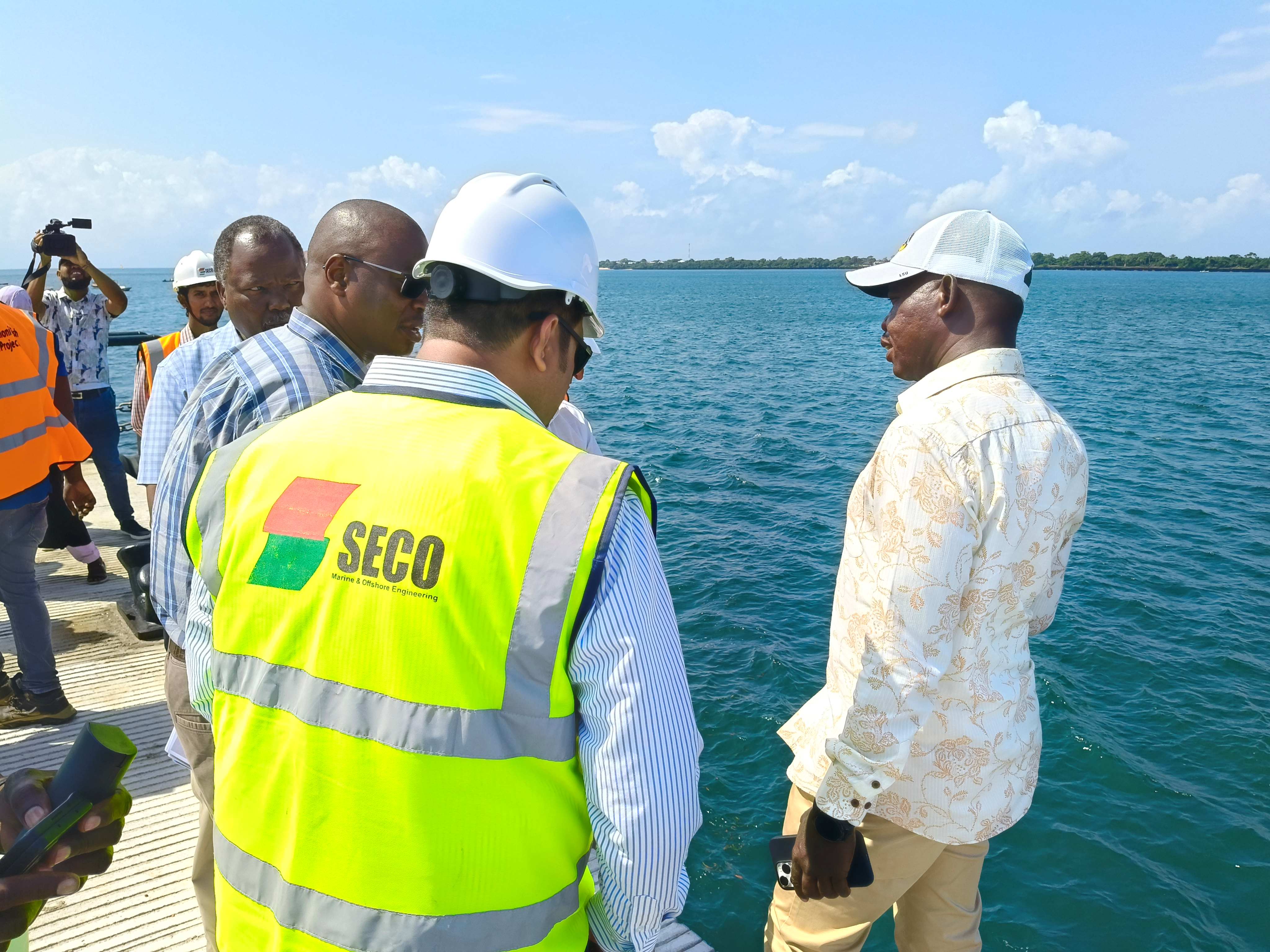

KPA managing director Captain William Ruto [R] at
the Shimoni fish port on July 16 / BRIAN OTIENO
The Lamu port is set to receive one of the largest vessels in the world next month, as KPA secures a deal with a leading shipping line.
The vessel will first dock at the port on August 24, from where the shipping line will make three scheduled calls every week.
“We will be flagging off the first line that will set base in Lamu by making three frequent calls every week,” Kenya Ports Authority MD Captain William Ruto said.
This means there will be a ship docked at the Lamu port on a daily basis as KPA continues to attract more vessels to the Lamu port.
“This project, which at times people are saying has not been operationalised, is coming to fruition and I want to thank the shipping lines that have shown a lot of confidence in us and also dedicating and rerouting their cargo through the port of Lamu,” Ruto said while at the Shimoni fish port.
The KPA boss said this will further open up Lamu for investment and attract other shipping lines to make more use of the port.
The 23-berth port is located in Manda Bay and is a key component of the LAPSSET Corridor project that aims to connect Kenya with Ethiopia and South Sudan.
It is designed to be one of the largest ports in Africa and is expected to handle a wide range of cargo, including containerised goods, general cargo, liquid bulk and potentially coal and Liquefied Natural Gas.
Manda Bay offers a deep and sheltered harbour with a wide navigable entrance. The port has modern facilities and is expected to be highly automated for efficient operations, ensuring better service.
It is such efforts that led to a significant increase in cargo throughput at the Mombasa port in 2024, Ruto added.
Last year, there was a 14.1 per cent increase in cargo throughput, reaching 40.99 million tonnes, compared to 35.9 million tonnes in 2023.
“Container traffic also soared by 24 per cent. This is a remarkable achievement which has never been attained in the history of this port,” Ruto said.
With 2.005 million Twenty-foot Equivalent Units (TEUs) recorded in 2024, up from 1.6 million in 2023, the momentum has been sustained into 2025.
The Mombasa port had already posted promising results both in cargo throughput during the period starting from January to June 2025.
“The port had already registered 21.3 million metric tonnes, an increase from 19.7 million metric tonnes during the same period in 2024, representing an increase of 1.6 million metric tonnes or 8.1 per cent growth,” Ruto said.
In container traffic, the Mombasa port crossed the one million TEUs mark compared to 940,000 last year.
“This was a growth of 6.7 per cent. Notably, both imports and exports saw significant growth, with imports up by 13.4 per cent while exports grew by 14.5 per cent,” the captain said.
He lauded the government for supporting Kenyan farmers, saying it was crucial in the increase of exports.
“For us to be able to export with a growth of 14.5 per cent is one of the best performances ever recorded in this port.
“Whatever efforts we’ve been doing as KPA, we see it is bearing fruit. At one point we even visited farmers in Naivasha to see how best we can support them,” he said.
These visits to the farmers will continue, Ruto said, as will the support for transit countries to lure them to use the Mombasa and Lamu ports. The primary contributions to the success were liquid bulk, dry bulk and loose cargo, which increased by 16.2 per cent and 44.7 per cent respectively.
Ruto said KPA’s financial stability is sound, with the authority posting over 20.1 per cent growth in terms of profits last year.
“This will be shared later on after the finances have been audited.”
He commended KPA workers and stakeholders for their efforts, saying they contributed to the success.
“The confidence that they have given us is what has made us grow this much,” he noted.
Instant Analysis:
Construction of the Lamu port began with a groundbreaking ceremony on March 2, 2012. The first berth became operational in May 2021. The deep-water port is an anchor project of the Lamu Port-South Sudan-Ethiopia Transport (LAPSSET) Corridor project.












